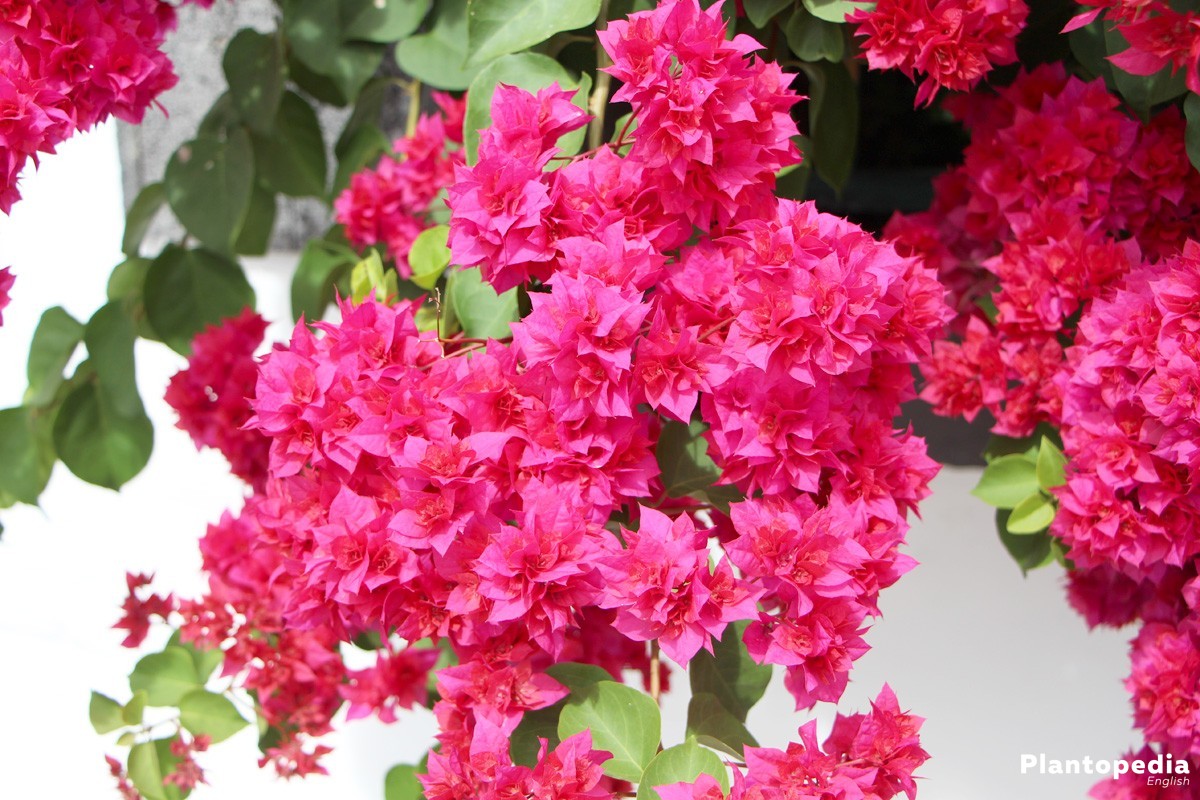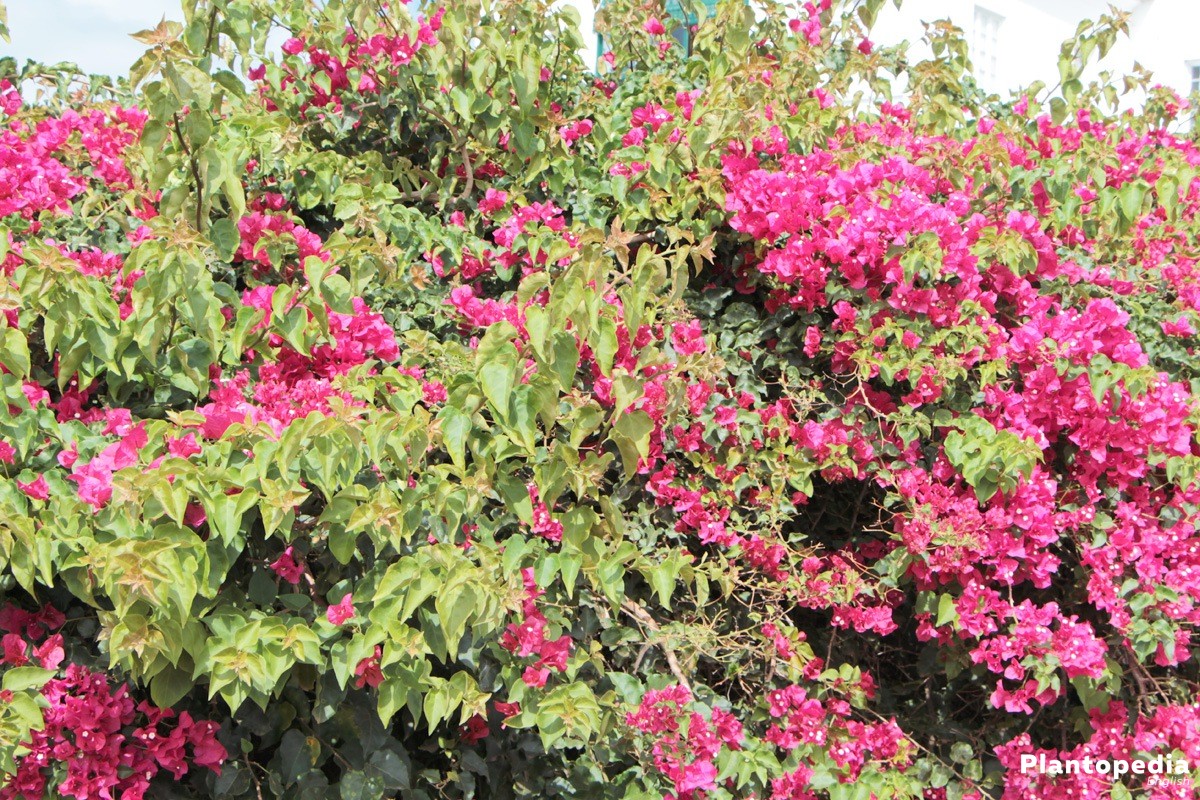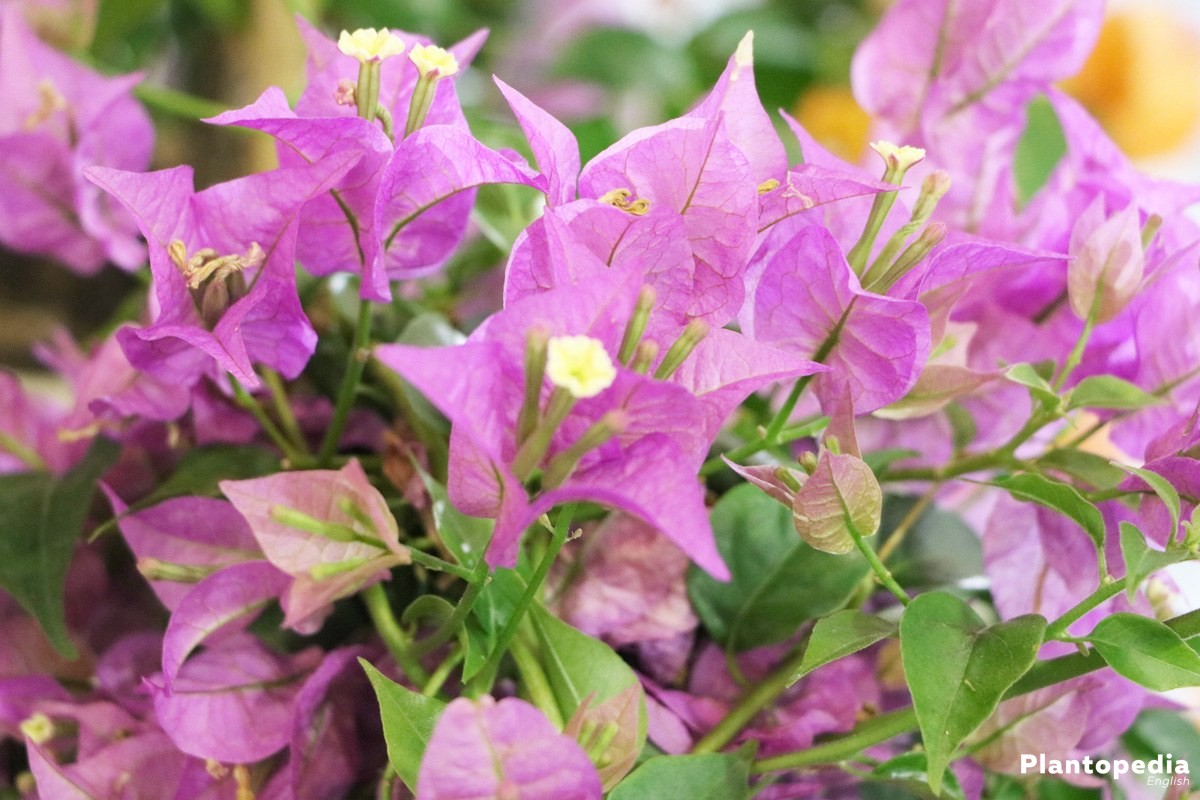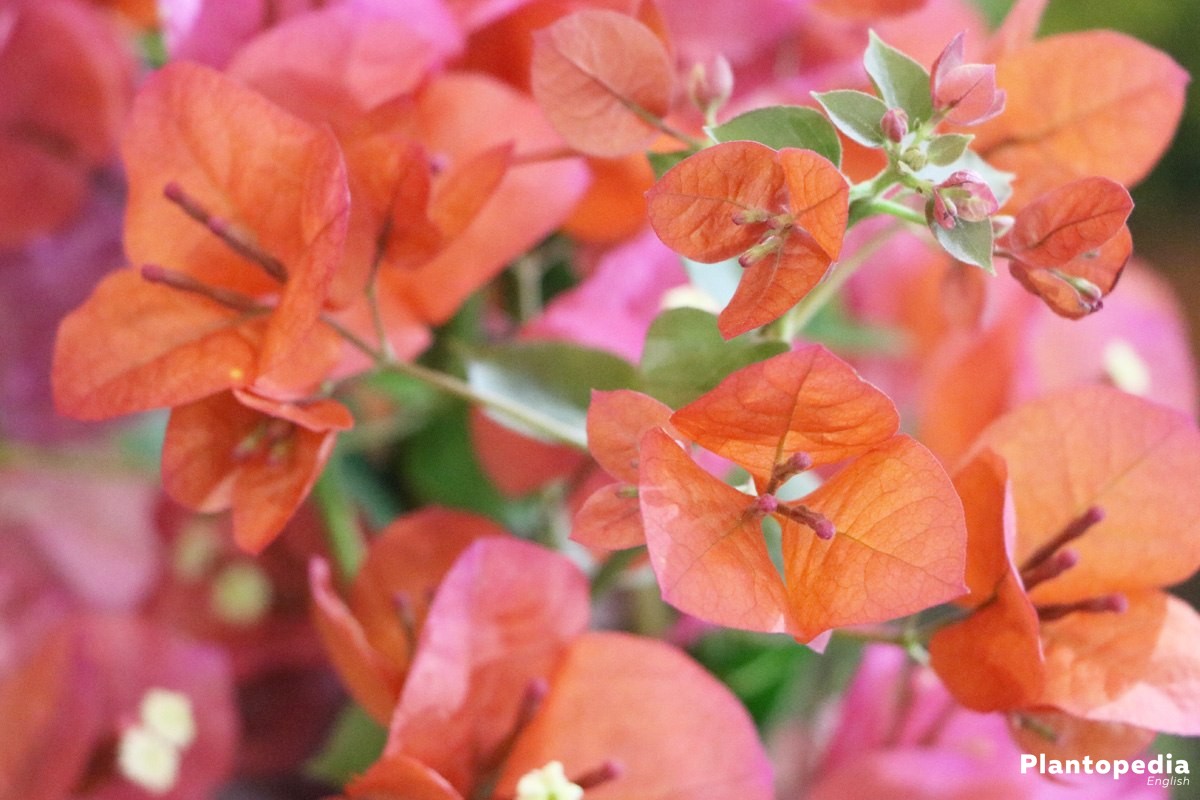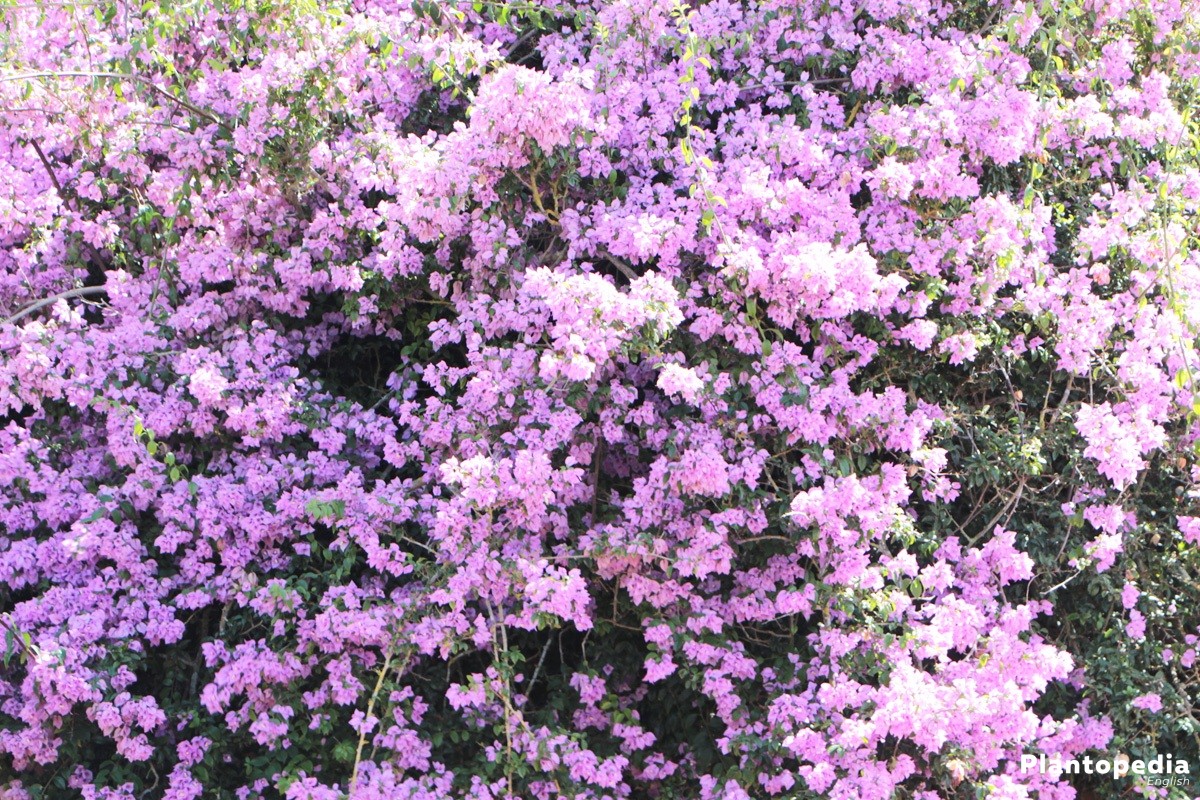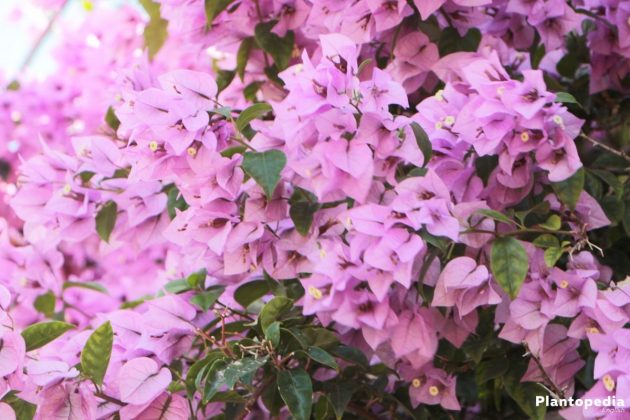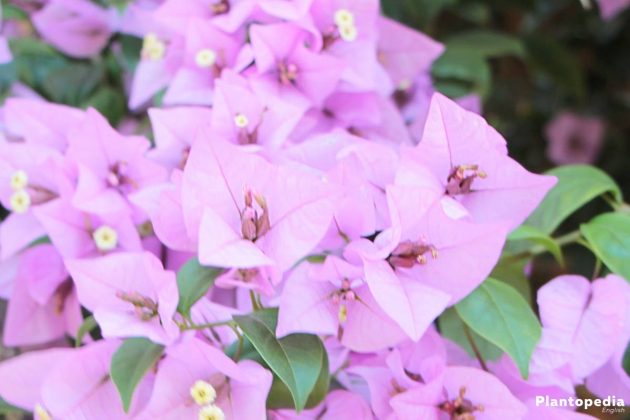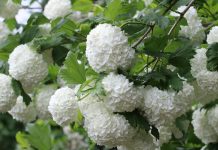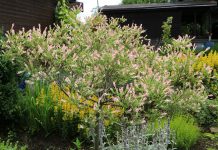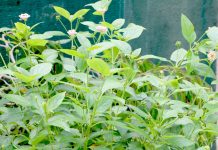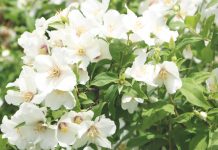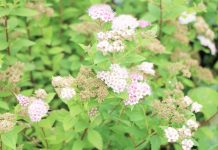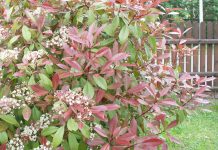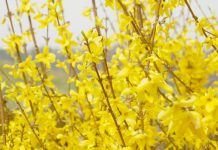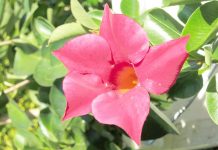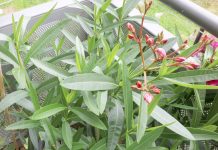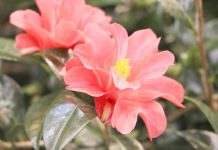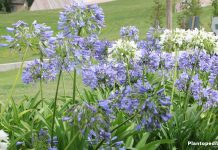In summery gardens all eyes are on Bougainvillea as a floral ambassador of tropical flowerage. Exotic Bougainvillea owes its name to three delicate, cream-coloured blossoms framed by three colourful, large bracts. From spring to autumn the magical ornamental tree will captivate you with its opulent blossoming dress. A display of splendour of that kind needs proper care. You will receive all information regarding plant care and hibernation right here.
Plant Profile
Contents
- Four-o’clock family (Nyctaginaceae)
- Species Bougainvillea with over 18 types
- Designation: Bougainville
- indigenous in tropical regions of South America
- flowering shrub, climbing or upright with thorns
- growth height in pot from 150 to 300 cm, in natural surroundings up to 1.200 cm
- egg-shaped or elliptical, petiolated leaves
- lateral or terminal, tripartite inflorescence with three blossoms and three bracts
- facetted blossoming colours from white to red and pink to purple, orange or yellow
- blossoming period from spring to autumn in several phases
- temperature: 5 degrees Celsius minimum
The luxurious charm of tropical flowerage moves into the summery garden with Bougainvillea, draws attention on the balcony or dresses the conservatory. Its never-ending flowering time is as legendary as the breath-taking luminosity of its three bracts, which unfold around the three delicate, cream-coloured blossoms.
Care
The picturesque ornamental tree puts on its floral dress in several phases, until it takes a breather in wintertime. To be able to fully enjoy the exotic flair, the demanding beauty should lack for nothing. These instructions put all measures surrounding planting, care and hibernation in a nutshell.
As a spreading climber, most types are equipped with numerous thorns reaching lengths from 0,2 to 0,8 cm. If there is climbing support available heights up to 3 metres can be reached. Otherwise, the flowering shrub grows compactly, bushy and upward.
Planting
Because it cannot survive in temperatures lower than 5 degrees Celsius, Bougainvillea grows excellently in a pot. This form of cultivations provides more flexibility when choosing the site as well as an easy way to take it inside in autumn. To put the plant into a plot, simply put it in the ground together with its pot. All aspects surrounding the correct planting will in the following be explained in more detail.
Substrate
Regular potting soil from the garden centre or hardware store wont do the requirements of Bougainvillea justice. Ideally, plant the exotic flowering shrub with high-quality soil for tub plants enriched with perlite, volcanic rock, coconut fibres or expended clay. The lower the amount of peat, the better the required buffer force in the substrate. Furthermore, a slightly acidic pH-value of 6,0 to 6,5 is also beneficial for the vitality and flowering capacity.
The Pot
The pot should be tailored towards the specific attributes of Bougainvillea. This includes that the flowering shrub develops a delicate root system, which will get stuck in a clay pot with large pores. Thus, every time you are repotting there is the danger of damaging the roots, which will lead to growth depressions.
Furthermore, the ornamental bush develops long vines as a spreading climber that will grow bushier and denser with adequate climbing support. Therefore, pay special attention to these characteristics when choosing a pot.
- glazed inside of a pot to protect the delicate roots
- ideally, with integrated climbing support with an obelisk or climbing pole
- no bottom opening as water drainage
The volume of the pot should be chosen in a way that allows a 5-8 cm gap between root bale and the edge of the pot. In a large pot Bougainvillea will busily start rooting itself through the container, which will be at the expense of growth and flowering capacity.
Potting
To give a newly bought Bougainvillea the best starting conditions, it should be immediately planted into the ideal pot with the substrate recommended here. Please pay special attention to the delicate root bale.
This is how you do it correctly:
- create drainage through the bottom opening of the pot using pieces of pottery
- a piece of water permeable and breathable fleece as coverage prevents the drainage material from silting up
- fill in a first layer of substrate and press down lightly so that there are no air holes
- carefully remove the root bale from the cultivation container with a knife
- take Bougainvillea out of the pot without putting too much pressure on the shoots
Place the plant centrally on the substrate, maintaining the previous planting depth. A pouring edge of 3-5 cm comes in handy, so that there will be no overflow later on. Water Bougainvillea with soft water at room temperature. In case the flowering shrub sheds its leaves after these exertions, this is no cause for concern. In the following two to three weeks it will start sprouting again.
Location
The better its location corresponds with the needs of Bougainvillea the more lavishly it will blossom. Therefore, place the pot in full sun at a warm and protected spot on the balcony or in the garden. It is beneficial if the plant is outside in the fresh air from May to September. The warmer the site, the more intense the colours of the bracts will be.
High summer temperatures are therefore not an obstacle when choosing the site but are desired. You will look out for the beautiful blossoms in vein if the flowering shrub suffers from lack of oxygen and is kept in poorly ventilated rooms. During the growth dormancy Bougainvillea should preferably be kept in a light place at temperatures between 5 and 15 degrees Celsius.
Watering
During the growth and flowering period, the water requirements of a Bougainvillea are very high. Water the flowering shrub whenever the substrate is dried out on the surface. Daily watering is no rarity on warm summer days. Water directly onto the roots with soft, lime-free water until the saucer starts to fill.
After 10 minutes pour out the excess water to prevent water logging. Water requirements decrease in proportion to sinking temperatures and lower light conditions. Therefore, reduce the amount of water given from autumn onwards to prevent root rot.
Fertilising
In regards to the nutrient balance Bougainvillea proves to be low-maintenance. Fertilise the exotic blossoming beauty weekly using liquid fertiliser from April to September. Stop the supply of nutrients from October to March. Please do not put the fertiliser onto dried soil because the roots will be sensitive to the salts it contains. You will avoid this problem if you water with clear water first and then add the liquid fertiliser.
Trimming
The correct trimming takes up a key function in the professional care program of Bougainvillea. Because it is climbing plant and part of the four-o’clock family the flowering shrub tends to form long, slender shoots. It actually blossoms a lot more lavishly on short, young branches.
Therefore, a pair of scissors comes into action in between the flowering phases. As soon as the blossoms have withered, trim the branches to half their length. Trim shortly above a bud that is pointed outwards or a leave node. Following hibernation and in time for the start of this years season trim the shrub again by a third. After each trim pamper Bougainvillea with a dose of liquid fertiliser.
Flower Induction
Even under ideal weather conditions, the climate of Central Europe does not even come close to the general conditions of the original habitat of Bougainvillea. Therefore, the plant is thankful for all the support it can get for flower formation. Strengthen vitality and blossoming with regular sprayings of valerian. Add 30 ml of valerian to 1000 ml of filtered rainwater to spray the shrub weekly.
Hibernation
Take Bougainvillea inside when the mercury column starts indicating temperatures lower than 10 degrees Celsius at night. This is how you escort the tropical flowering diva happily and healthily through wintertime.
- the winter quarters are light and cool, with temperatures between 5 and 15 degrees Celsius
- reduce watering
- do not fertilise from October to March
- repeatedly spray with 3% valerian solution
- if necessary trim the shoots by a third or by half to allow bushy growth
It is no reason for concern if the shrub should start shedding its leaves during hibernation; this is a completely normal process. The supply of nutrients will successively continue from the beginning of March if you start fertilising with liquid fertiliser every four weeks.
In parallel with its move to the garden, the summery care program will start again. To prepare Bougainvillea for the outdoor season, you should start hardening it off during daytime in semi-shade on the balcony from the beginning of April. Until after mid May the shrub should be kept behind glass.
Propagation
Every trim provides you with an abundance of usable materials for vegetative propagation. Furthermore, there is the possibility of growing additional Bougainvillea plants during the whole course of the vegetation phase with the help of cuttings.
This form of propagation has the advantage that the young plants posses all the beautiful attributes of their mother plant. All lignified, non-blossoming shoot tips with a length of 10 to 15 cm are suitable. Cut a cutting off underneath a dormant bud and dip the cut surface into rooting powder. Remove the leaves of the lower half.
This is how you proceed:
- fill small pots with cultivation soil and moisturise with lime-free water
- pre-drill the planting hole in the substrate using a dibber to place a cutting each
- set up in a heatable propagation box at 24 to 28 degrees Celsius at a light site avoiding full sunlight
- keep the cuttings moisturised constantly without causing water logging
Within two to three weeks the cuttings will develop independent root systems. The cuttings will start sprouting as a visual signal for vital root growth. Repot young Bougainvillea into regular substrate as soon as it has rooted through the propagation pot completely.
Diseases
Diseases and Pests of Bougainvillea don’t stand a chance at a sunny, warm site with lots of fresh air and loving care according to the care program illustrated above. A stressed plant may face the following problems.
Mildew
Fungal spores of mildew will find the influence of damp and warm weather in combination with a lack of light caused by heavy clouds to be ideal living conditions. You will identify the infection by a floury residue on the top and bottom of the leaves.
Immediately cut off all infected parts and dispose of them as household waste. You can combat the early stages of infection with a mixture of 1 l of water and 125 ml of fresh milk. Spray Bougainvillea every two to three days until there are no more symptoms visible.
Aphids
Aphids lurk to infest weak Bougainvillea in the garden or on the balcony. Therefore, regularly check the tops and bottoms of the leaves for the tiny parasites and combat them immediately with a proven household remedy. Add 15 ml of pure soft soap as well as 1-2 drops of spirit to 1 l of water. Spray the affected plant with this solution every two to three days until there are no more aphids visible.
Varieties
Among the over 18 different types within the species the two types Bougainvillea Glabra and Bougainvillea Spectabilis primarily serve as parent plant for marvellous hybrids. The following selection will present to you some of the most beautiful types in more detail.
Barbara Karst
This premium type will thrill you with intensively luminous blossoms in a rich wine red. The reddish sheen of also the young leaves is typical for this Bougainvillea. During the course of the blossoming period, the colours will fade successively and turn into a rosy tone. With the next phase of blossoming, blossoms of a deep red colour will flourish and the transformation starts again.
Magnifica
This Bougainvillea shows off her large blossoms in a striking purple colour. In contrast to the original type, its colourful bracts spread to nearly double the diameter. The crème-coloured real blossoms in the centre provide a striking contrast. The colour intensity will slowly decreases over time like it does in all Bougainvillea and tends to be of a light purple towards the end of each blossoming phase.
Variegata
With its purple blossoms on top of which green-yellow variegated leaves rise, this type achieves a high level of appeal. Thanks to this characteristic the decorative value of the pot plant remains unchanged in between the flowering periods. Furthermore, this hybrid is equipped with a robust physique and is therefore recommended particularly for beginners.
Mary Palmer
A particularly successful cultivation shows off with two-coloured blossoms. Mary Palmer will captivate you with pink and white bracts in varying degrees; the warmer and sunnier the site, the more intensive the play of colours.
Jamaica White
No collection should lack a white blossoming Bougainvillea. Furthermore, this type will thrill you with a high level of tolerance towards problems at the site and maintenance mistakes. In combination with a Bougainvillea of colour that has been cultivated with trellis as support, there are many options in regards to creative designing possibilities on the balcony or in the conservatory.
Furthermore, we have a variety of double blossoming Bougainvillea thanks to competent growers. The opulent hybrids create a picturesque scene in red, pink, purple or orange. This extravagant explosion of flowers requires careful care with little room for failures because the growing success has been achieved at the cost of its resilience.


